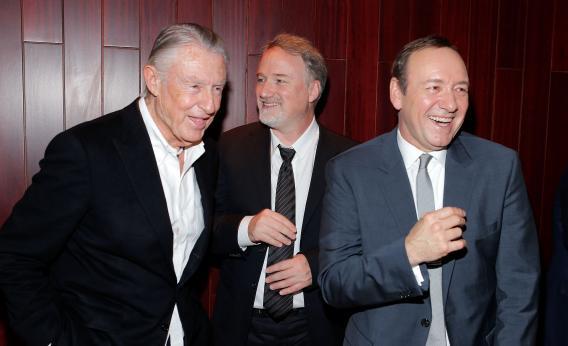Netflix is getting a lot of buzz since releasing all 13 episodes of its premiere series, House of Cards, and the pundits are scrambling to opine on The Future of Television. For a solid, by-the-numbers approach, Rebecca Greenfield outlines a few reasons to have faith in Netflix’s new business model:
With Netflix spending a reported $100 million to produce two 13-episode seasons of House of Cards, they need 520,834 people to sign up for a $7.99 subscription for two years to break even … That sounds daunting, but at the moment, Netflix has 33.3 million subscribers, so this is an increase of less than 10 percent on their current customer base. Of course, looking at Netflix’s past growth, that represents pretty reasonable growth for the company that saw 65 percent growth from 20 million to over 33 million world-wide streaming customers. Much of that growth, however, comes from new overseas markets. But, even in the U.S., from one year ago, Netflix saw about 13 percent streaming viewer growth jumping from 24 million to 27 million.
But, as anyone who watched the show over the weekend noticed, House of Cards doesn’t just rely on Netflix’s subscriber base for its revenue. The show has ample product placement. In multiple scenes, Kevin Spacey’s character is seen raptly playing Call of Duty on his PlayStation 3 console. In another scene, he eats Honey Bunches of Oats while talking with his wife in the kitchen. On a mission to pay back a political favor, a congressman rents a car from Enterprise Rent-A-Car. And so on.
The thing is, House of Cards isn’t a gimmick to lure in new Netflix subscribers. After all, the people who are most interested in the show likely already have a Netflix subscription or know someone who does. What’s more, while I liked the show enough to watch 12 episodes over the course of two days, it’s not nearly good enough to be a reason all its own to become a Netflix subscriber. The show, then, is a sunk investment that Netflix is making in the hope that it will prop up its new brand identity and gain experience.
The question that remains is whether Netflix will start launching more compelling, original programming like House of Cards before rivals are able to match Netflix’s convenience and user experience.
